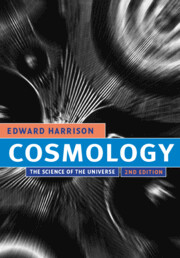Book contents
- Frontmatter
- Contents
- Preface
- Introduction
- PART I
- PART II
- 10 Curved space
- 11 Special relativity
- 12 General relativity
- 13 Black holes
- 14 Expansion of the universe
- 15 Redshifts
- 16 Newtonian cosmology
- 17 The cosmic box
- 18 The many universes
- 19 Observational cosmology
- PART III
- Appendix – Fundamental quantities
- Index
15 - Redshifts
from PART II
Published online by Cambridge University Press: 05 June 2012
- Frontmatter
- Contents
- Preface
- Introduction
- PART I
- PART II
- 10 Curved space
- 11 Special relativity
- 12 General relativity
- 13 Black holes
- 14 Expansion of the universe
- 15 Redshifts
- 16 Newtonian cosmology
- 17 The cosmic box
- 18 The many universes
- 19 Observational cosmology
- PART III
- Appendix – Fundamental quantities
- Index
Summary
O ruddier than the cherry,
O sweeter than the berry.
O nymph more bright
Than moonshine night,
Like kidlings blithe and merry.
John Gay (1685–1732), Acis and GalateaCOSMIC REDSHIFTS
Wavelength stretching
In the previous chapter we saw how the Fizeau–Doppler (known more briefly as the Doppler) formula played a vital role in the discovery of the expansion of the universe. Distant galaxies have redshifted spectra, and their redshifts were interpreted to mean the galaxies are rushing away from us. Then in the late 1920s and early 1930s Georges Lemaître, Howard Robertson, and other cosmologists discovered a totally new interpretation of extragalactic redshifts based on the expanding space paradigm.
The new expanding space redshift is simple and very easy to understand. We suppose that all galaxies are comoving and their emitted light is received by observers who are also comoving. Light leaves a galaxy, which is stationary in its local region of space, and is eventually received by observers who are stationary in their own local region of space. Between the galaxy and the observer, light travels through vast regions of expanding space. As a result, all wavelengths of the light are stretched by the expansion of space (see Figure 15.1). It is as simple as that.
A light ray, emitted by a distant galaxy, travels across expanding space and is received by the observer. If, while the light ray travels, all comoving distances are doubled, it follows that all wavelengths of the light ray are also doubled.
- Type
- Chapter
- Information
- CosmologyThe Science of the Universe, pp. 302 - 322Publisher: Cambridge University PressPrint publication year: 2000

